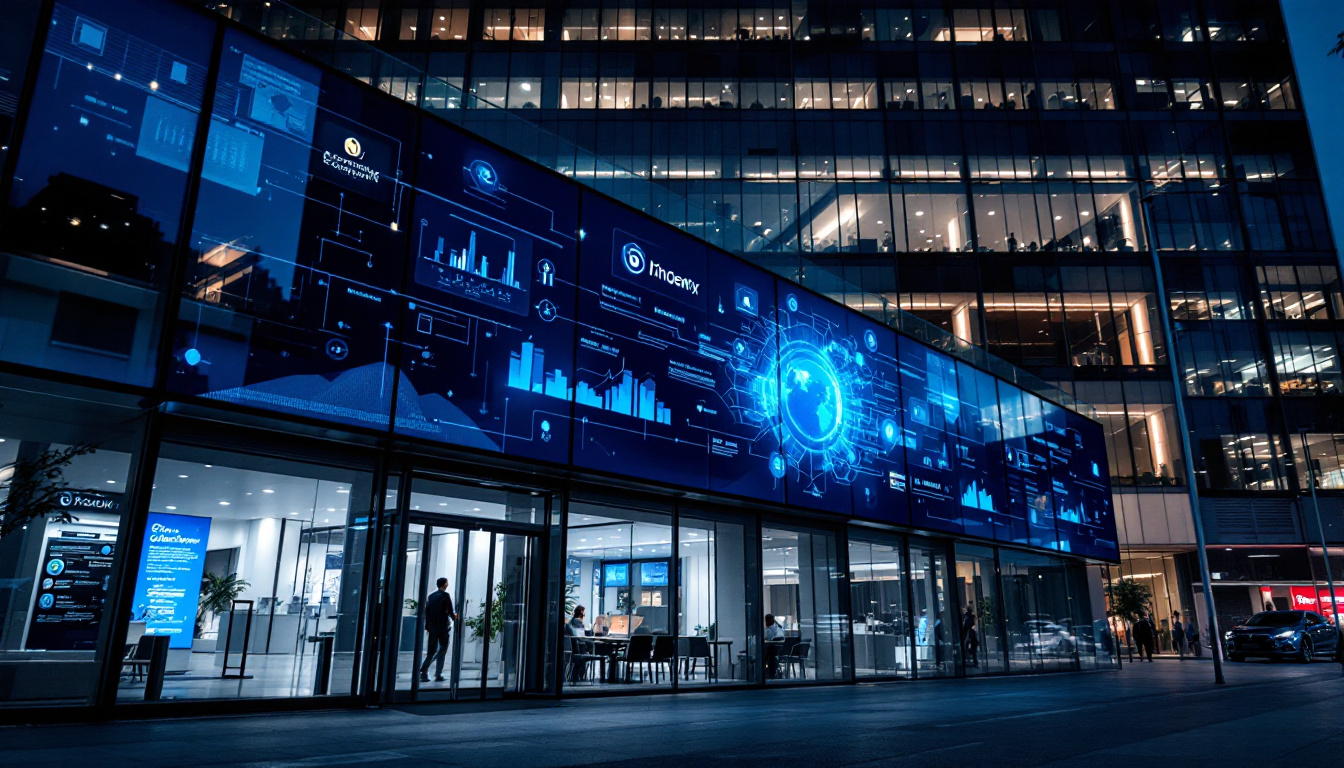Introduction
As the demand for remote work continues to grow, organizations are looking to optimize their remote IT support operations to ensure seamless workflows and robust security. This article delves into the best practices and strategies necessary for effective remote IT support and monitoring, aiming to provide valuable insights for enhancing operational efficiency and user satisfaction.
Effective Approaches to Remote IT Support

What are effective approaches to remote IT support?
Effective remote IT support hinges on several strategic approaches tailored to enhance user experience and operational efficiency. Establishing clear communication protocols is paramount; it fosters transparency and guides users on how to effectively report issues and receive assistance. Tools such as ticketing systems can streamline this process, ensuring no request falls through the cracks.
Utilizing robust remote access tools—like remote desktop software—enables IT professionals to troubleshoot and resolve problems without the need for onsite visits, significantly reducing downtime. Ensuring support is available 24/7 accommodates employees across different time zones, allowing for timely resolutions to unexpected technical issues.
Security measures are critical in this setting. Implementing strong systems such as VPNs and two-factor authentication, alongside a zero-trust access model, safeguards sensitive information and devices against unauthorized access.
Encouraging self-service options can further empower users, allowing them to resolve common issues independently. This can be complemented by automation of repetitive tasks, freeing up IT staff to focus on complex inquiries and improving overall support efficiency.
Lastly, training programs for both users and support staff help build a strong support culture. Regular training ensures that everyone is up-to-date on best practices and tools, enhancing collaboration and contributing to a more resilient IT environment.
Optimizing Remote IT Support Operations

What are the best practices to optimize remote IT support operations?
To optimize remote IT support operations, organizations should cultivate a culture of prevention through proactive maintenance, user education, and regular data backups.
Implementing secure access measures is crucial to protect remote environments. This includes multi-factor authentication and endpoint encryption to safeguard sensitive data. A comprehensive strategy for secure access ensures that only authorized personnel can interact with critical systems.
How can communication systems improve remote support?
Streamlining communication through a centralized ticketing system enhances the troubleshooting process. This allows IT teams to track support requests and user interactions efficiently.
Utilizing real-time collaboration tools, such as chat, video calls, and screen-sharing, fosters immediate support and quick resolution of issues.
Why is training and monitoring important?
Investing in training for both support staff and users is essential for maximizing the effectiveness of remote support systems. Through training, users become more capable of resolving common issues independently, reducing reliance on support teams.
Additionally, implementing remote monitoring tools helps detect potential issues before they escalate. This proactive approach ensures the technology environment remains secure and operationally efficient.
By incorporating these best practices, organizations can enhance their remote IT support operations, providing reliable assistance while minimizing downtime.
Essential Tools and Communication Strategies for Remote IT Support

What essential tools and communication strategies are recommended for remote IT support?
Effective remote IT support hinges on a suite of essential tools and clear communication strategies. Here are the key components to consider:
Remote Desktop Applications
Secure remote desktop applications allow IT teams to access systems remotely. Tools like TeamViewer and AnyDesk enable technicians to diagnose and resolve issues swiftly, minimizing downtime for users.
Ticketing Systems
Implementing a ticketing system helps manage and prioritize IT support requests. Systems such as Jira Service Management or Zendesk streamline the support process, ensuring accountability and organized tracking of issues.
Collaboration Platforms
Collaboration is paramount in remote IT support. Platforms like Microsoft Teams and Slack facilitate effective communication, allowing real-time troubleshooting and team collaboration through chat and video calls.
Cybersecurity Measures
Robust cybersecurity is essential in protecting sensitive data during remote sessions. Organizations should adopt strong password policies, implement multi-factor authentication, and provide regular cybersecurity training for employees to help them recognize and respond to threats effectively.
Maintaining a comprehensive knowledge base can empower employees by allowing them to resolve common issues independently. This, coupled with frequent data backups, safeguards against data loss.
In conclusion, investing in reliable tools and fostering clear communication enhances efficiency and security in a remote work environment.
Guidelines for Supporting Remote IT Users

What guidelines should be followed for supporting remote IT users and IT department responsibilities?
To effectively support remote IT users, organizations should prioritize establishing clear communication channels. This ensures that IT issues are reported, tracked, and resolved promptly, regardless of the employee's time zone. Utilizing collaboration platforms like chat and video calls allows for real-time troubleshooting, enhancing user satisfaction.
Robust security measures are essential. Implementing Virtual Private Networks (VPNs) and requiring two-factor authentication are critical steps to safeguard sensitive information and ensure compliance with various regulations. Regularly updating security protocols will also contribute to robust protection against potential threats.
Training and monitoring are integral to the support process. IT staff must undergo regular training to stay updated with the latest remote support tools and techniques. Additionally, proactive system monitoring enables early detection of issues, allowing for quick resolutions that minimize downtime for remote workers.
Another important guideline is the standardization of hardware and software to streamline troubleshooting and support processes. Providing employees with uniform tools helps create a more manageable IT environment. Incorporating resources for time management can also aid remote workers in maintaining a healthy work-life balance, thus enhancing overall productivity and satisfaction.
Addressing Challenges and Software Needs in Remote IT Support

What are common challenges and necessary software for remote IT support?
Common challenges faced in remote IT support include:
- Network connectivity issues: Unstable connections can hinder timely support.
- Varying user technical proficiency: Some employees may struggle with IT tools, complicating issue resolution.
- Maintaining robust security: This becomes critical under Bring Your Own Device (BYOD) policies, where diverse devices may present unique risks.
- Managing increased ticket volume: The shift to hybrid work has resulted in a surge in helpdesk tickets that many IT teams find hard to manage while ensuring effective communication.
- Complex technical problems: These often arise without direct access to devices, reducing the speed of troubleshooting.
To navigate these challenges effectively, the following software solutions are essential:
- Remote desktop tools: Allow IT personnel to access and fix user devices directly.
- VPNs: Ensure secure connections for safe data transmission.
- Ticketing systems: Help track and prioritize support requests efficiently.
- Project management tools: Monitor productivity and promote team collaboration.
What security measures should be implemented?
Robust security measures must be integrated, such as:
- Multi-factor authentication: To ensure that only authorized users access sensitive information.
- Endpoint encryption: Protects data from unauthorized access during transmission.
- User awareness training: Equips staff to recognize potential threats and adopt a security-first mindset.
What communication protocols enhance support?
Clear communication protocols are vital. Best practices include:
- Open channels: Regular updates through emails or collaboration platforms to keep everyone informed.
- Utilizing ticketing systems: To streamline the issue reporting process and maintain transparency.
Creating a comprehensive strategy with these elements will bolster the efficiency of remote IT support while addressing potential pitfalls.
Implementing Security Measures for Remote IT Access
What security measures should be implemented for secure remote IT access?
To ensure secure remote IT access, organizations need a multifaceted approach incorporating stringent security protocols. Firstly, multi-factor authentication is essential. This adds an extra layer of verification beyond just usernames and passwords, making unauthorized access significantly harder. Coupled with this, strong password policies that require complex passwords and regular updates can further safeguard access.
Data encryption is another vital component. All sensitive information transmitted remotely should be encrypted to prevent interception by malicious actors. Organizations should also enforce the principle of least privilege, ensuring that users have only the access necessary for their tasks.
Moreover, continuous auditing of access logs can help detect unusual activity, allowing swift action against potential breaches. The use of VPNs creates secure connections for remote workers, while the careful management of Remote Desktop Protocol (RDP) usage mitigates risks associated with remote access.
Employee training and device management
Training employees on cybersecurity best practices is equally important. They should be informed on how to recognize phishing attempts and avoid common pitfalls. Finally, implementing endpoint protection and mobile device management (MDM) tools ensures that all devices accessing the network are secure and compliant with organizational policies, further boosting the overall security posture.
The Role of Remote Monitoring and Auditing in IT Support
Why are remote monitoring and auditing important in IT support, and how can they be effectively conducted?
Remote monitoring and auditing play a crucial role in maintaining the efficiency and security of IT support services. These practices facilitate real-time oversight of systems, ensure compliance with security policies, and protect organizations from potential technological risks. By employing remote monitoring and control (M&C) systems, IT teams can gather, analyze, and respond to data dynamically, thus enhancing their decision-making processes and operational efficiency.
Monitoring Benefits:
- Continuous Operational Uptime: Regular monitoring helps detect and resolve issues before they escalate into significant downtime.
- Cost Reduction: Automating routine monitoring tasks minimizes the need for immense manual oversight, saving resources.
- Enhanced Security: Through real-time alerts and device health tracking, potential security breaches can be addressed promptly.
Conducting Audits:
Effective remote audits require structured frameworks that include:
- Risk Assessment: Identifying vulnerabilities in IT infrastructures.
- Control Evaluations: Reviewing existing security measures and their effectiveness.
- Digital Technologies: Utilizing tools like AI and blockchain for transparency during assessments.
Preparation is crucial, along with the implementation of robust cybersecurity measures to protect sensitive data during audits.
Compliance and Security
Maintaining compliance with regulations like GDPR and HIPAA is essential for any organization. Remote auditing ensures all practices align with these standards while establishing a culture of accountability. Incorporating session logging and monitoring networks further aids organizations in meeting compliance requirements and fortifying their security frameworks. This layered approach not only assures adherence to protocols but also reinforces the overall integrity of IT support operations.
Conclusion
In conclusion, remote IT support plays a crucial role in enabling organizations to meet the demands of a modern workforce scattered across various locations. By adhering to best practices and leveraging the right tools and strategies, businesses can enhance their remote IT support operations and ensure robust security, seamless communication, and high levels of employee satisfaction. Continuous improvement and adaptation to evolving challenges are key to maintaining a resilient IT support framework that aligns with organizational goals.
References
- Remote IT Support: Best Practices and Top 10 Solutions for 2025
- Best Practices and Tools for Remote IT Support
- IT Monitoring Best Practices for a Remote Workforce - Ignition, Inc.
- IT Support For Remote Workers: Best Practices And Software
- [PDF] Guide to Securing Remote Access Software - CISA
- Best Practices for Remote IT Support - Mobile Mentor
- Remote IT Support in 2022 | The Complete Guide - Electric AI
- Securing Remote IT Support: Best Practices And Software Solutions
- Building Trust with Remote Support: Key Factors & Software































